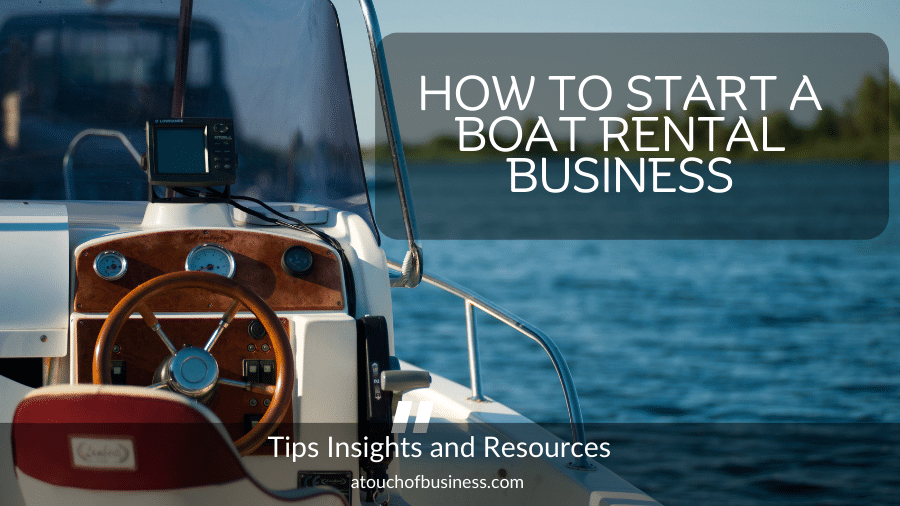How to write off a boat as a business expense? It’s a question many business owners, particularly those in maritime industries or requiring water-based operations, grapple with. Navigating the IRS guidelines for deducting boat expenses can be tricky, requiring meticulous record-keeping and a clear understanding of allowable deductions. This guide unravels the complexities, providing a step-by-step approach to successfully claiming boat expenses on your tax return, maximizing your deductions while staying compliant.
From establishing legitimate business use and choosing the right depreciation method to mastering record-keeping and avoiding potential pitfalls, we’ll cover all aspects of writing off a boat. We’ll explore various scenarios, illustrating how to calculate deductible amounts for both predominantly business and mixed-use boats. By the end, you’ll be equipped to confidently navigate the process and ensure you’re getting the tax benefits you deserve.
Business Use of a Boat: How To Write Off A Boat As A Business Expense

The Internal Revenue Service (IRS) allows deductions for business expenses, including the use of a boat, provided the boat is used predominantly for business purposes and proper documentation is maintained. Simply owning a boat doesn’t automatically qualify it for business expense deductions; the IRS scrutinizes the extent of business use to ensure the deduction is legitimate. Failing to meet these requirements can result in penalties and disallowance of the deduction.
The IRS uses a facts-and-circumstances test to determine the legitimacy of business use. This means they consider the overall usage pattern of the boat, the nature of the business, and the supporting documentation provided. The key is demonstrating that the boat’s primary function is related to business activities, not personal pleasure.
Legitimate Business Uses of a Boat
Several legitimate business activities can justify using a boat for business purposes. These uses should be clearly distinguishable from personal recreational activities. Careful record-keeping is crucial to avoid IRS challenges.
Examples of legitimate business uses include: charter fishing businesses using boats for client excursions, marine survey companies utilizing boats for underwater inspections, and real estate agents using boats to show waterfront properties. Conversely, personal uses such as weekend fishing trips or family vacations are not deductible. The line is blurred when a boat is used for both business and personal reasons; in such cases, only the portion attributable to business use is deductible.
Documentation for Business Use of a Boat
Substantiating business use requires meticulous record-keeping. The IRS expects detailed documentation proving the business purpose of each trip. This documentation should include:
- Detailed Logbook: A logbook should record every trip, noting the date, time, purpose of the trip, passengers, and mileage. This is arguably the most important piece of documentation.
- Invoices and Receipts: Maintain records of all expenses related to the boat’s business use, such as fuel, maintenance, repairs, and insurance. These receipts should clearly link the expense to a specific business trip.
- Client Records: If clients are transported on the boat, keep records of client names, contact information, and the purpose of the trip. This could include contracts or agreements detailing the boat’s use in a specific service.
Thorough documentation protects against IRS challenges. The IRS may request this documentation during an audit, and insufficient documentation can lead to the disallowance of the deduction.
Sample Logbook Entry
A properly maintained logbook is essential. Here’s an example of a logbook entry:
| Date | Time | Purpose | Passengers | Mileage |
|---|---|---|---|---|
| 2024-10-27 | 9:00 AM – 5:00 PM | Client Charter Fishing Trip – John Smith & Co. | Captain (Self), John Smith, Jane Doe, Peter Jones | 50 nautical miles |
This entry clearly shows the date, time, purpose (a client charter), passengers, and mileage, providing the IRS with sufficient evidence of business use. Consistency in logbook entries is key to successful substantiation of business expenses.
Depreciation Methods for Boats

Depreciating a boat used for business purposes allows you to deduct a portion of its cost each year, reducing your taxable income. Several methods exist for calculating depreciation, each with its own implications for your tax liability. Understanding these methods is crucial for optimizing your tax strategy.
Depreciation methods account for the decrease in a boat’s value over its useful life. The Internal Revenue Service (IRS) allows businesses to use various depreciation methods, primarily straight-line and accelerated methods. The choice of method significantly impacts the amount of depreciation expense you can claim each year.
Straight-Line Depreciation
Straight-line depreciation is the simplest method. It evenly distributes the cost of the asset over its useful life. This method is often preferred for its ease of calculation and predictability. The formula for calculating straight-line depreciation is:
(Asset Cost – Salvage Value) / Useful Life
For example, consider a boat purchased for $50,000 with a salvage value (estimated value at the end of its useful life) of $10,000 and a useful life of 5 years. The annual straight-line depreciation would be:
($50,000 – $10,000) / 5 years = $8,000 per year
Accelerated Depreciation
Accelerated depreciation methods, such as the double-declining balance method, allow for larger depreciation deductions in the early years of an asset’s life and smaller deductions in later years. This can be advantageous for businesses that want to reduce their tax liability more quickly. However, the calculations are more complex. The double-declining balance method uses a depreciation rate that is double the straight-line rate.
Factors Influencing Depreciation Method Choice, How to write off a boat as a business expense
Several factors influence the choice of depreciation method. These include the asset’s useful life, the expected salvage value, the business’s overall financial situation, and tax planning goals. Businesses with a higher tax rate in the early years might opt for accelerated depreciation to minimize their immediate tax burden. Conversely, businesses expecting lower tax rates in the future might prefer the straight-line method for its simplicity and consistent deductions.
Depreciation Calculation Comparison
The following table compares straight-line and double-declining balance depreciation for the $50,000 boat example over five years. Note that the salvage value limits the depreciation in the double-declining balance method.
| Year | Straight-Line Depreciation | Accelerated Depreciation (Double-Declining Balance) | Remaining Value (Straight-Line) |
|---|---|---|---|
| 1 | $8,000 | $20,000 | $42,000 |
| 2 | $8,000 | $10,000 | $34,000 |
| 3 | $8,000 | $5,000 | $26,000 |
| 4 | $8,000 | $2,500 | $18,000 |
| 5 | $8,000 | $2,500 | $10,000 |
Record Keeping and Tax Forms
Meticulous record-keeping is crucial for successfully deducting boat expenses on your taxes. The IRS scrutinizes business deductions, and a well-organized system protects you from potential audits and ensures you claim all legitimate expenses. Failing to maintain proper records can result in disallowed deductions or even penalties.
Maintaining accurate and organized records related to boat expenses requires a systematic approach. This involves diligently documenting every expense associated with your business’s use of the boat, separating these expenses from personal use, and storing the records securely. This diligent approach minimizes the risk of audit-related issues and maximizes your chances of a successful tax deduction.
Essential Records for Boat Expense Deductions
Proper documentation is paramount for substantiating your boat expense deductions. This involves compiling a comprehensive set of records that support each claimed expense. The IRS requires taxpayers to maintain sufficient documentation to prove the business purpose and amount of every deduction. Missing or insufficient documentation can lead to the disallowance of the deduction.
- Purchase Records: Retain the bill of sale, loan documents (if applicable), and any other documentation related to the boat’s acquisition.
- Maintenance and Repair Records: Keep receipts, invoices, and work orders for all repairs, maintenance, and upkeep. This includes engine repairs, hull cleaning, and any other necessary servicing.
- Fuel and Oil Records: Maintain detailed records of fuel purchases, including dates, amounts, and locations. If using a fuel card, statements should be retained.
- Dockage and Mooring Fees: Keep receipts for all dockage, mooring, and storage fees incurred for business-related purposes.
- Insurance Premiums: Maintain records of your boat insurance premiums, clearly indicating the portion attributable to business use.
- Depreciation Records: Maintain a detailed depreciation schedule, showing the method used, the useful life of the boat, and the annual depreciation expense.
- Logbook: A comprehensive logbook documenting all business-related trips is essential. This logbook should include dates, destinations, business purpose of each trip, mileage (if applicable), and the names of any passengers.
Relevant Tax Forms for Boat Expense Deductions
The specific tax forms required depend on your business structure and the nature of your expenses. However, several forms are commonly used when deducting boat expenses. It’s crucial to understand the purpose of each form and ensure accurate completion to avoid potential complications. Consulting with a tax professional is recommended to ensure compliance with all applicable regulations.
- Form 1040, Schedule C (Profit or Loss from Business): This form is used to report profit or loss from a sole proprietorship or single-member LLC. Boat expenses are typically deducted on this form.
- Form 1040, Schedule F (Profit or Loss from Farming): If your business involves fishing or other agricultural activities that utilize the boat, this form may be necessary.
- Form 4562 (Depreciation and Amortization): This form is used to report depreciation on business assets, including your boat.
Separating Business and Personal Boat Expenses
Accurate separation of business and personal expenses is critical. The IRS only allows deductions for expenses directly related to business activities. Mixing personal and business use can lead to disallowed deductions or an audit. Maintaining a clear distinction is crucial for successful tax reporting. One method is to allocate expenses based on the percentage of business use. For example, if your boat is used 60% for business and 40% for personal use, you can only deduct 60% of the total expenses.
Essential Documents for an IRS Audit
Preparing for a potential IRS audit involves maintaining comprehensive records. This proactive approach protects you and ensures you can easily substantiate your deductions. The IRS may request specific documentation during an audit; being prepared minimizes stress and potential penalties.
- All records mentioned previously (purchase records, maintenance records, fuel records, etc.)
- Bank statements showing payments related to boat expenses.
- Business licenses and permits.
- Copies of any contracts related to the boat’s use.
- Tax returns from previous years.
Potential Challenges and Limitations
Writing off a boat as a business expense, while potentially beneficial, comes with significant limitations and potential pitfalls. Understanding these challenges is crucial to avoiding costly mistakes and potential IRS scrutiny. Improperly claiming deductions can lead to penalties and interest, significantly outweighing any tax savings.
The Internal Revenue Service (IRS) carefully scrutinizes business deductions related to luxury items, and boats often fall into this category. The IRS examines the extent of business use versus personal use to determine the allowable deduction. Simply owning a boat and claiming business use isn’t sufficient; rigorous documentation is essential.
Luxury Item Limitations
The IRS takes a strict stance on deducting expenses for luxury items used partially for business. The primary limitation lies in the “luxury-item rule,” which restricts deductions for items deemed primarily for personal pleasure. While a boat may serve a business purpose, such as transporting clients or equipment, substantial personal use significantly reduces the allowable deduction. For example, if a boat is used 20% for business and 80% for personal recreation, only 20% of the expenses are deductible. This calculation applies to all expenses associated with the boat, including maintenance, repairs, depreciation, and docking fees. The IRS may challenge the claimed percentage of business use if adequate records are not maintained.
Examples of Disallowed Boat Expenses
Several scenarios could result in the IRS disallowing boat expenses. For instance, expenses incurred during purely personal trips, such as family vacations or fishing excursions, are entirely non-deductible. Similarly, expenses related to boat modifications primarily enhancing personal comfort (e.g., luxurious interior upgrades) are unlikely to be allowed. If a business owner uses the boat for commuting, unless this is a demonstrably necessary part of their business operation (e.g., a marine surveyor needing to travel to remote locations to assess damage), this use might not be considered legitimate business use. The key is to demonstrate a direct and necessary connection between the boat’s use and the generation of business income.
Penalties for Improperly Claiming Boat Expenses
Incorrectly claiming boat expenses can result in several penalties. The IRS might assess accuracy-related penalties, which are typically 20% of the underpayment. In cases of intentional disregard of tax rules or fraudulent activity, penalties can be much higher, potentially reaching 75% of the underpayment. Furthermore, interest accrues on underpaid taxes, adding to the overall financial burden. The IRS may also conduct a thorough audit, demanding extensive documentation to justify the claimed deductions. This audit can be time-consuming and stressful for the taxpayer.
Minimizing the Risk of an IRS Audit
Maintaining meticulous records is the most effective strategy to minimize the risk of an IRS audit. This includes a detailed logbook documenting each boat usage, specifying the date, purpose (business or personal), location, and the names of any passengers. Supporting documentation such as invoices for repairs, maintenance, and fuel should be meticulously filed. Furthermore, it is crucial to accurately calculate and apply the appropriate depreciation method for the boat, as inconsistencies in this area can raise red flags. Consulting with a tax professional experienced in handling deductions for specialized assets like boats is highly recommended. They can advise on proper record-keeping practices and ensure compliance with all relevant tax regulations. Proactive compliance significantly reduces the chances of an audit and the associated penalties.
Illustrative Scenarios

Understanding the tax implications of using a boat for business requires examining specific scenarios. The following examples illustrate how the percentage of business use impacts the allowable deduction. Remember, accurate record-keeping is crucial for substantiating your claims.
Scenario 1: Primarily Business Use
A marine biologist, Dr. Anya Sharma, uses her research vessel, the “Ocean Explorer,” almost exclusively for her work. She conducts marine life surveys, collects samples, and teaches field courses, all aboard the “Ocean Explorer.” Dr. Sharma meticulously logs her trips, detailing the date, location, purpose, and hours spent on each business-related voyage. Less than 5% of her boat usage is for personal recreation. In this case, Dr. Sharma can likely deduct the full cost of operating and maintaining the “Ocean Explorer” as a business expense. The minimal personal use doesn’t significantly impact her ability to claim a full deduction. She can support her claim with detailed logs and receipts.
Scenario 2: Mixed Business and Personal Use
John operates a charter fishing business. His boat, “The Reel Deal,” is used for both business charters (60%) and personal fishing trips (40%). To calculate his deductible expenses, John must determine the percentage of business use. He tracks his business and personal hours, expenses, and mileage. Let’s say his total boat expenses for the year were $10,000. To determine the deductible amount, he multiplies the total expenses by the percentage of business use: $10,000 x 0.60 = $6,000. John can deduct $6,000 as a business expense. He must keep detailed records to support this allocation.
Visual Representation of Business Use Percentage and Deduction
The following table illustrates how the percentage of business use directly affects the allowable deduction. Assume total boat expenses are $15,000.
| Percentage of Business Use | Allowable Deduction |
|—|—|
| 100% | $15,000 |
| 80% | $12,000 |
| 60% | $9,000 |
| 40% | $6,000 |
| 20% | $3,000 |
| 0% | $0 |This demonstrates a linear relationship: the higher the percentage of business use, the greater the allowable deduction. Accurate record-keeping is essential to determine this percentage correctly.






